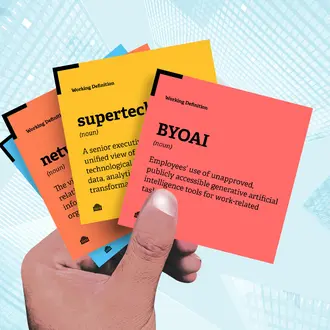Credit: Chuyko Sergey / Shutterstock
Change is afoot in the semiconductor industry. The Biden administration has provided new funding amid concerns that the U.S. has become too dependent on microchips made abroad. Tensions are also rising between China and Taiwan, where most chips are made. Will this lead to supply chain problems?
Intel is hoping to even the playing field by building new factories in Arizona, Ohio, and Germany. Specifically, the company is planning to invest at least $20 billion in two new factories in Ohio.
David Zinsner, executive vice president and chief financial officer at Intel, said that the stakes are high: Intel has a global presence and is not immune from intense geopolitical challenges.
“Where Intel is complex is in these kind of more geopolitical challenges. There are a lot of things that are very single-threaded and can just completely bankrupt a company if decisions aren’t made correctly,” Zinsner said. “And so that’s where the pressure, I think, is a little bit higher [for us].”
At the most recent MIT Sloan CFO Summit, finance professorspoke with Zinsner about these tough geopolitical challenges as well as intellectual property and creative financing. Here’s what he had to say:
Navigating geopolitical challenges
The U.S. currently accounts for only about 12% of global semiconductor manufacturing capacity. Many worry that in the event of an escalated conflict between Taiwan and China, semiconductor supply chains may be disrupted, which is why U.S. chipmakers are ramping up their operations stateside.
Zinsner said that if Intel emerges as a robust supplier, it could help reduce the tension between China and Taiwan.
“Because we are creating this U.S.-European supply for semiconductors, in a way I feel like we are lowering the geopolitical tensions that are out there,” Zinsner said. “Because Taiwan is so important to the world, it becomes this lightning rod for China and the U.S., but if there is a more balanced supply chain, it becomes less … volatile.”
Getting creative with financing
Related Articles
In addition building plants in Arizona, Ohio, and Germany, Intel is expanding in Israel and Ireland. The Arizona project — which is projected to cost $30 billion — is “not something that even Intel can do on its own, so we’ve had to lean on government support,” Zinsner said.
The CHIPS Act should help. Passed by Congress last year to strengthen domestic semiconductor manufacturing, design, and research, the act provides around $52 billion in new funding for U.S. manufacturing of semiconductors.
Additionally, Intel has partnered with infrastructure investment firm Brookfield on some “creative financing,” Zinsner said: Brookfield will jointly invest in the fabrication plant in Arizona such that “as the fab starts to generate cash flow, which doesn’t happen for four or five years, then we share in the cash flow.”
Intel “gives up a little bit of the upside in the outer years,” Zinsner said, “but it gives us $15 billion to work with, which is obviously pretty helpful in terms of financing.”
Protecting intellectual property
Amid concerns that China is infringing on U.S. intellectual property, the U.S. government has issued regulations that will prohibit China from advancing in the semiconductor race. The rules aim to stop U.S. and non-U.S. companies from supplying Chinese entities with hardware or software comprising American technology in its supply chain.
Zinsner acknowledged this friction and said that while China is a “meaningful” market for Intel, it’s still important to protect U.S. intellectual property, calling this trade-off “a balancing act.”
“The key is to make sure that we are supporting [Chinese] customers, but also staying true to the rules that the U.S. puts in place to protect very advanced technology from getting into those markets,” Zinsner said.
“I do think that semiconductor companies generate a lot of income from selling globally, and all that global cash flow comes back into R&D investments that end up helping the U.S.,” he said. “I think it has to be a very careful approach — how to protect IP in a way that makes sure that all companies remain healthy in the process.”
Watch the presentation:
Read next: 4 leadership insights from Stripe’s chief financial officer



